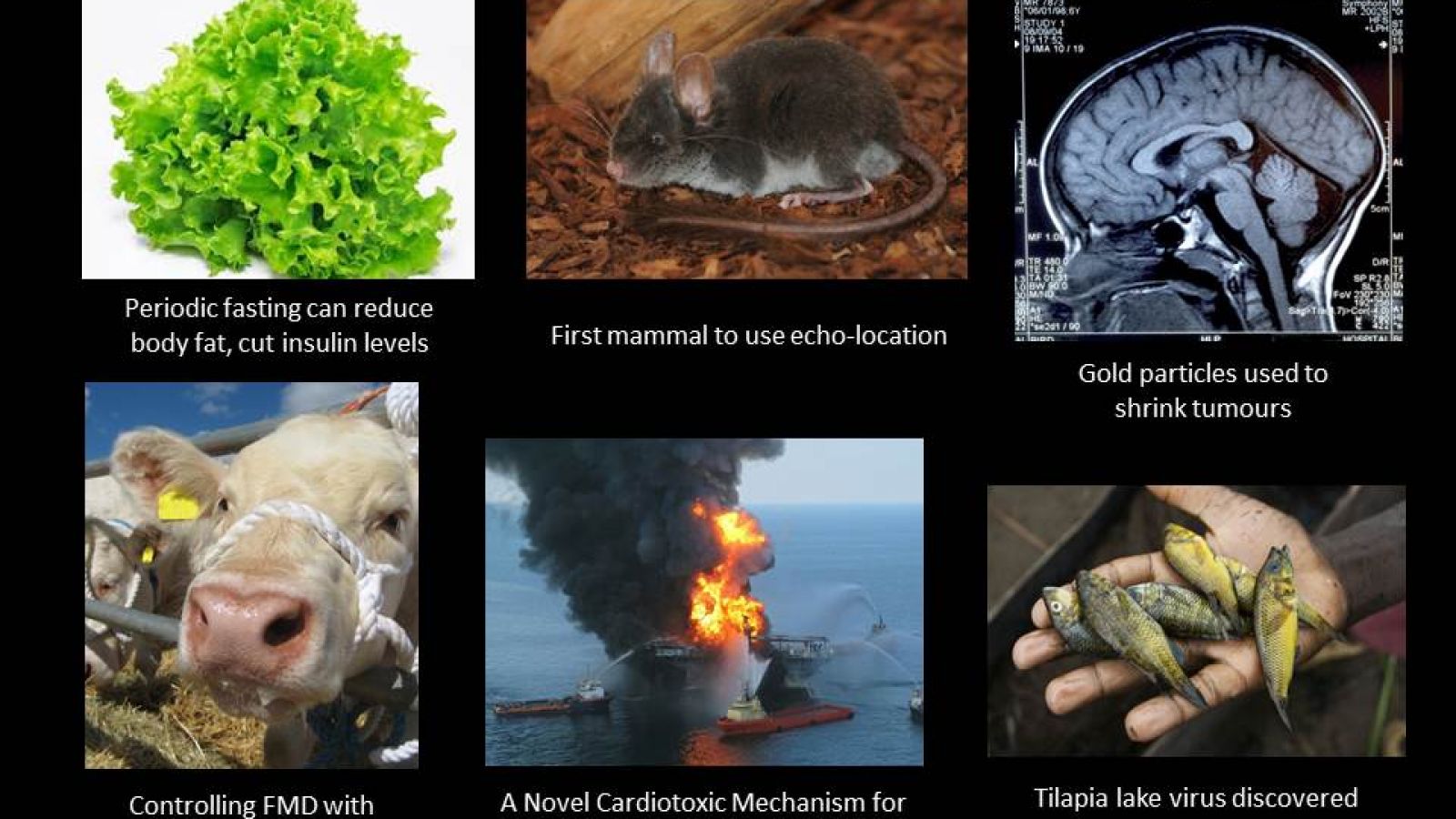A Novel Cardiotoxic Mechanism for a Pervasive Global Pollutant
The 2010 Deepwater Horizon disaster resulted in a major oil spill in the Gulf of Mexico, an area of water which is heavily populated with fish species. In a paper published in Nature Scientific Reports, the team analysed the effects of individual components of crude oil on the hearts of fish.
By studying cardiac cells from pelagic fish, like tunas and mackerels that live in the Gulf of Mexico, the team identified phenanthrene, a polycyclic aromatic hydrocarbon (PAH) released from oil as a key factor in disrupting heart function.
Furthermore the processes in the heart which are affected by this PAH are common across all vertebrates, including humans, and underlie both the strength and the rhythm of the heart.
This is of particular importance as phenanthrene is present in air pollution in urban areas.
http://www.nature.com/articles/srep41476
The 2001 FMD outbreak cost the UK economy an estimated £8 billion and led to the culling of approximately seven million livestock.
Controlling FMD with vaccine
Modelling by scientists at Warwick University show that savings in the numbers of animals culled and overall costs of the next epidemic can be predicted by knowing the quantity of vaccine available, even when other variables such as vaccine effectiveness are not known.
http://journals.plos.org/ploscompbiol/article?id=10.1371/journal.pcbi.1005318
Mamaphant? Elamoth? De-extinction event?
https://www.theguardian.com/science/2017/feb/16/woolly-mammoth-resurrection-scientists
Tilapia lake virus discovered
Mysterious virus has decimated farmed tilapia in Ecuador and Israel
Tilapia lake virus believed to be novel variety
Farmers urged to report cases and improve biosecurity measures
http://www.scidev.net/global/fisheries/news/deadly-fish-virus-finally-identified.html
Quick diet
Previous studies in rodents and humans have suggested that periodic fasting can reduce body fat, cut insulin levels, and provide other benefits.
The so-called fasting-mimicking diet has also shown benefits. For most of the month, participants eat as much of whatever they want. Then for five consecutive days they stick to a menu that includes chips, energy bars, and soups, consuming about 700 to 1100 calories a day.
The food is high in unsaturated fats but low in carbohydrates and proteins. Two years ago, Longo’s team reported that mice on the rodent version of the diet lived longer and exhibited other positive effects, such as lowered blood sugar and fewer tumours.
Now, the researchers have completed a randomized clinical trial in which 71 people followed the fasting-mimicking diet for 3 months, while volunteers in the control group didn’t change their eating habits. Overall, the dieters lost an average of 2.6 kilograms (5.7 pounds), whereas the control group remained at the same weight (Reported in Science Translational Medicine). The calorie cutters also saw reductions in blood pressure, body fat, and waist size.
http://www.sciencemag.org/news/2017/02/five-day-fasting-diet-could-fight-disease-slow-aging
First mammal to use echo-location
The tree-climbing Vietnamese pygmy dormouse seems to make ultrasonic calls to guide its motion. If that’s confirmed, it would be the first arboreal mammal known to use echolocation.
Moscow zoo keepers had noticed that they were able to climb with remarkable agility despite poor eyesight. They also have big, bat-like ears. “We suspected that they use echolocation,” says Panyutina.
Analysis of a film soundtrack provided evidence.
Gold particles used to shrink tumours
Scientists are recreating the shape of the rabies virus using gold particles in order to target tumours in the brain. The particles could then be heated up using laser light and kill infected tissue around it. The scientists injected these particles into the tail of mice with tumours - they quickly travelled to the brain and the scientists were able to greatly reduce the size of the tumours.
http://www.sciencemag.org/news/2017/02/how-stop-brain-cancer-rabies
Last edited: 9 March 2022 12:31




